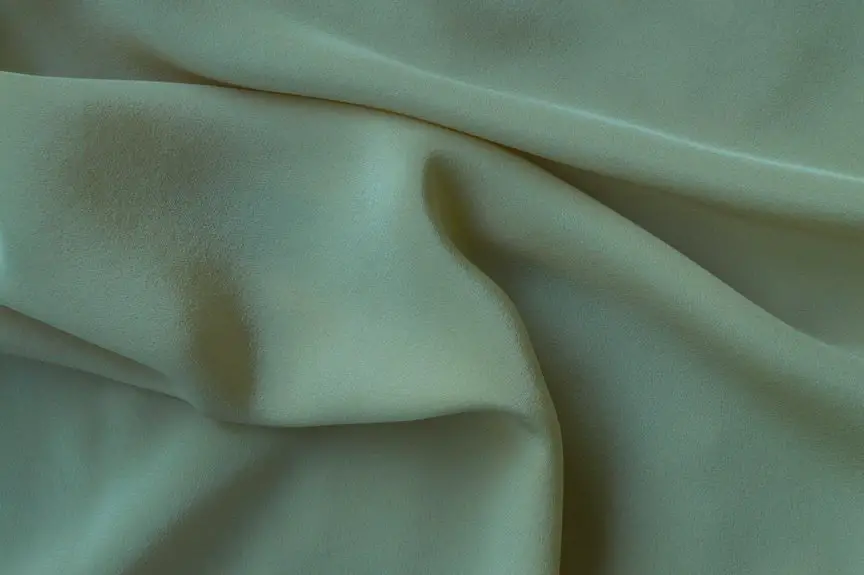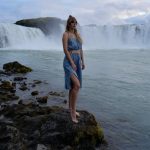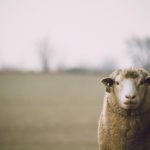Did you know that natural fibers like linen and merino wool can wick moisture nearly as well as some synthetic fabrics? If you’re looking to stay dry without relying on man-made materials, understanding which non-synthetic options perform best is key. From breathability to durability, these fabrics offer unique benefits that could change how you approach comfort and sustainability in your wardrobe. Let’s explore which ones stand out and why.
Table of Contents
Key Takeaways
- Linen offers excellent breathability and quick-drying properties, making it a top natural moisture-wicking fabric.
- Merino wool regulates temperature and effectively wicks sweat, suitable for various weather conditions.
- Hemp is durable and naturally wicks moisture, providing comfort and sustainability.
- Bamboo fibers naturally wick moisture and resist odors, enhancing comfort in activewear.
- Blending cotton with wool or bamboo improves moisture management compared to pure cotton.
Key Natural Fibers for Moisture Management
While synthetic fabrics often get the spotlight for moisture-wicking, several natural fibers excel at keeping you dry and comfortable.
Natural fibers can outperform synthetics in moisture-wicking, keeping you dry and comfortable naturally.
If you’re seeking cotton alternatives, consider linen. Its properties include excellent breathability and quick-drying ability, making it a top choice for moisture management. Linen’s fibers absorb moisture without feeling damp, so you stay comfortable even during warm days.
Another great option is hemp, which offers durability alongside natural moisture-wicking.
Wool, especially merino, also deserves mention; it regulates temperature and wicks sweat away effectively.
By choosing these natural fibers, you’ll enjoy fabrics that work with your body’s moisture instead of trapping it.
These cotton alternatives provide reliable comfort without relying on synthetic materials, making them smart choices for moisture management.
Benefits of Using Natural Moisture-Wicking Fabrics
You’ll appreciate how natural moisture-wicking fabrics offer superior comfort and breathability, keeping you dry without feeling heavy.
They also help regulate your body temperature, so you stay cool when it’s warm and warm when it’s cool.
Plus, choosing these fabrics supports sustainability and reduces your environmental impact.
Comfort and Breathability
Because natural moisture-wicking fabrics draw sweat away from your skin, they keep you feeling dry and comfortable throughout the day. When you focus on fabric selection, you’ll notice many natural options offer superior breathability compared to synthetics. Their low moisture retention guarantees your skin stays cool and irritation-free. This comfort makes them ideal for active wear and everyday clothing alike.
| Fabric Type | Breathability Level |
|---|---|
| Cotton | Moderate |
| Linen | High |
| Bamboo | High |
| Wool | Moderate to High |
Choosing the right fabric helps you avoid discomfort and stay fresh. Natural fibers excel because they let air circulate while efficiently moving moisture away from your body.
Temperature Regulation Benefits
When you wear natural moisture-wicking fabrics, your body temperature stays balanced, whether you’re facing a hot summer day or a chilly evening.
These fabrics excel in temperature regulation by efficiently pulling moisture away from your skin and allowing it to evaporate quickly. Unlike synthetic options, natural fibers have superior moisture retention that prevents you from feeling clammy or overheated. This means you stay dry and comfortable as your body cools down naturally.
In cooler conditions, these fabrics also trap just enough warmth without causing excessive sweating, helping you maintain an even temperature.
Sustainability and Eco-Friendliness
Although synthetic fabrics often dominate the market, choosing natural moisture-wicking materials supports sustainability and reduces environmental impact.
As an eco conscious consumer, you help lower reliance on petroleum-based products, which take years to decompose and pollute ecosystems. Natural fibers like organic cotton, hemp, and bamboo grow with fewer chemicals, conserving soil and water resources.
By opting for these fabrics, you contribute to sustainable fashion practices that prioritize ethical production and biodegradability. Unlike synthetics, natural fibers break down more easily, minimizing landfill waste.
When you select moisture-wicking fabrics made from natural sources, you not only stay comfortable but also promote a healthier planet. Making these mindful choices aligns your wardrobe with environmental values without sacrificing performance.
Comparing Moisture-Wicking Performance of Popular Natural Fibers
If you want to stay dry without relying on synthetic fabrics, understanding how natural fibers handle moisture is key.
Cotton blends often top the list for comfort and breathability, but pure cotton tends to hold moisture rather than wick it away. Blending cotton with fibers like polyester improves moisture management, but since you’re avoiding synthetics, look for natural blends that incorporate wool or bamboo instead.
Bamboo benefits include its natural ability to wick moisture and resist odors, making it a great choice for active wear. Wool, especially merino, excels at drawing sweat away while regulating temperature.
Applications of Non-Synthetic Moisture-Wicking Materials
You’ll find non-synthetic moisture-wicking fabrics in both activewear and outdoor gear, where staying dry is key.
They also work great in formal and winter wear, keeping you comfortable without synthetic fibers.
Let’s explore how these materials fit into different wardrobe needs.
Activewear and Outdoor Gear
When you choose activewear or outdoor gear made from non-synthetic moisture-wicking fabrics, you get natural breathability and comfort that synthetic materials often can’t match.
Fabrics like merino wool and bamboo are increasingly popular in activewear trends because they regulate temperature and manage sweat without trapping odors. You’ll appreciate how these materials keep you dry during intense workouts or long hikes.
Plus, their outdoor durability stands up to rough conditions, resisting wear and tear better than many natural fibers. Whether you’re trail running, cycling, or camping, these fabrics adapt to changing weather and activity levels.
Choosing non-synthetic options means you get sustainable, effective moisture control that supports your performance and comfort, all while reducing your environmental footprint.
Formal and Winter Wear
Although formal and winter wear often rely on heavier fabrics, incorporating non-synthetic moisture-wicking materials can considerably enhance comfort and functionality.
When dressing for formal occasions, you want to look sharp without feeling sweaty or uncomfortable. Fabrics like merino wool or bamboo blends wick moisture away from your skin, keeping you dry and fresh underneath your suit or dress shirt.
For winter layering, these materials excel by managing sweat while providing insulation, so you stay warm without overheating. You can confidently wear a merino wool base layer beneath your coat, knowing it’ll regulate your body temperature and keep moisture at bay.
Choosing non-synthetic moisture-wicking fabrics for formal and winter wear means you won’t have to sacrifice comfort for style during cold, important events.
Challenges in Using Natural Moisture-Wicking Fabrics
While natural moisture-wicking fabrics offer great comfort and breathability, they come with some challenges you should consider.
One major challenge in moisture wicking is that natural fibers like cotton and wool absorb moisture rather than quickly moving it away from your skin. This can leave you feeling damp and heavy during intense activities.
Additionally, natural fiber limitations include slower drying times compared to synthetic alternatives, which can be inconvenient if you need your clothes to dry fast.
You might also notice that natural fabrics are more prone to shrinking or losing shape after washing.
Understanding these challenges helps you make better choices, especially if you prioritize moisture management but want to stick with non-synthetic materials.
Sustainable and Comfort Advantages of Natural Fibers
Despite some drawbacks, natural fibers bring notable benefits that make them worth considering for moisture-wicking fabrics. You’ll appreciate the natural fiber advantages, especially when it comes to sustainability and comfort enhancement.
These fibers are biodegradable and often require less energy to produce, reducing your environmental footprint. Plus, their breathability helps regulate your body temperature, keeping you comfortable during activity.
Here are three key benefits:
- Eco-friendly production lowers environmental impact compared to synthetics.
- Superior moisture management keeps sweat away from your skin.
- Soft texture reduces irritation, enhancing overall comfort.
Choosing natural fibers means you get a sustainable option without compromising comfort. You’ll enjoy fabrics that work with your body and the planet, making your moisture-wicking gear both practical and responsible.
Frequently Asked Questions
How Do Natural Moisture-Wicking Fabrics React to Different Weather Conditions?
You’ll find natural moisture-wicking fabrics excel in weather adaptability, adjusting well to varying conditions. Their seasonal performance shines as they keep you dry and comfortable by efficiently managing sweat and breathability throughout the year.
Can Natural Moisture-Wicking Fabrics Be Blended With Synthetics Effectively?
You can effectively use blending techniques to combine natural moisture-wicking fabrics with synthetics, enhancing durability and moisture management. When you compare performance, blends often outperform pure natural fabrics in active wear and comfort.
What Are the Best Washing Practices for Natural Moisture-Wicking Fabrics?
If you want your natural moisture-wicking fabrics to last, you’ve got to master washing techniques. Use cold water, gentle cycles, and mild detergents—skip fabric softeners—to keep fabric care simple and preserve their moisture-wicking power.
Are There Any Allergy Concerns With Natural Moisture-Wicking Fibers?
You might experience allergy symptoms if you have fiber sensitivity to natural moisture-wicking fabrics like wool or hemp. It’s best to test a small patch first, as reactions vary depending on your personal sensitivity.
How Quickly Do Natural Moisture-Wicking Fabrics Dry Compared to Synthetics?
You might think natural fabrics dry as fast as synthetics, but their drying rates are usually slower due to higher moisture retention. Still, they keep you comfortable by absorbing sweat effectively, making them great for casual wear.
- Where to Buy Sherpa Suede Fabric - July 12, 2025
- How to Draw or Illustrate the Texture of Suede Fabric - July 12, 2025
- What Is Baseball Suede Leather Fabric? - July 12, 2025






